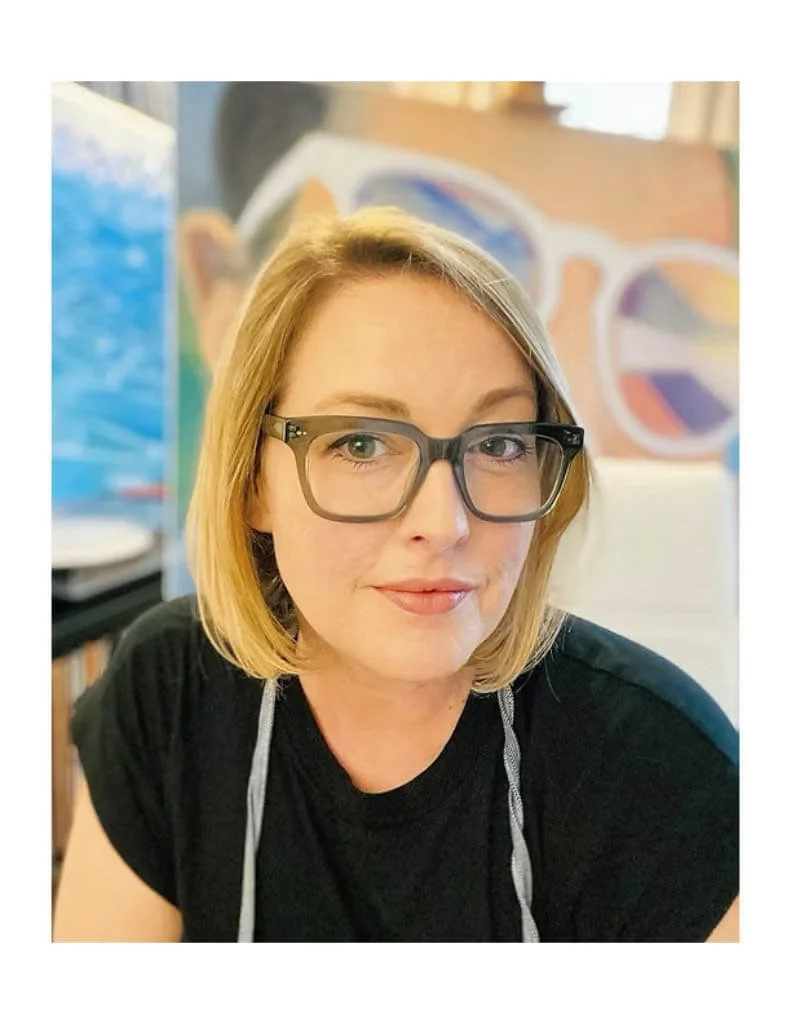Emily Cate Sabree
Emily Cate Sabree (b. 1981) is a contemporary realist oil painter based in Manhattan. Her work explores how disposable items and leisure activities are integral to contemporary American consumer culture, reflecting the complexities of modern existence through a realist lens.
A 2024–25 merit scholarship recipient at the Art Students League of New York, Emily studied portraiture and figure painting under the esteemed White House portrait artist Sharon Sprung. As a resident artist member of the Salmagundi Club, she engages with a vibrant community of fellow artists, enriching her practice and artistic exploration. Both the Art Students League and The Salmagundi Club recognized Emily’s paintings with awards in 2025.
Emily's art has garnered attention and is held in private collections across the United States. In 2023, she was honored to be an artist in residence at the Ora Lerman Charitable Trust. Her recent exhibitions include MYTHOS at The Painting Center, Postcards from Paradise at Voss Gallery in San Francisco, and the Affordable Art Fair in NYC with treat gallery. Additionally, her work has been featured at the Nordstrom NYC Flagship Home Store, showcasing her talent to a broader audience.
With a commitment to blending contemporary themes with traditional techniques, Emily continues to create thought-provoking works that resonate with viewers, inviting them to reflect on the nuances of consumerism in their own lives.
Contact
www.emilycatesabree.com
emily@emilycatesabree.com
@emilycatesabree
Interview
What inspires your art practice and keeps you motivated?
Lately, I’ve been deeply inspired by the contradictions and consequences of modern life — particularly our reliance on convenience and disposable culture. Single-use plastics have become so embedded in our daily routines that we barely question them anymore, even though we’re fully aware of their long-term damage. That disconnect fascinates me. I’m interested in exploring the unsettling beauty of things meant to be discarded — the tension between form and function, use and waste. What keeps me motivated is that core question: Why do we continue harmful habits, even when we know better?
How does your mission as an artist influence the work you create?
My mission is to challenge viewers to reconsider the value and impact of everyday objects, especially those we treat as worthless after a single use. By rendering disposable plastics in meticulous detail, I aim to elevate them beyond their intended function — to reframe them as symbols of our collective choices. Recently, I’ve begun incorporating language into my compositions, which has added a more political and timely layer to the work. The words bring clarity and urgency, grounding the imagery in the reality of 2025 and the crises we’re all navigating.
Can you share a key part of your creative process that helps you stay focused?
Daily writing and meditation are essential parts of my creative process. They help me distill the chaos of ideas into something clear and intentional. In the past, I could easily get swept up in experimentation and lose direction. Now, I allow ideas to develop slowly — I sit with them, refine them, and only begin painting when the vision feels fully formed. This slower, more deliberate process helps me stay grounded and focused on what I truly want to express.
What mindset tip do you rely on to overcome challenges in your art career?
I’ve made a conscious decision to reject the pressure to produce at the pace of capitalism. I won’t compromise the integrity of my work for the sake of algorithms or trends. My paintings are created slowly, built up in meticulous layers of oil paint — and that slowness is intentional. It’s a quiet rebellion against the idea that faster is better. I believe that craftsmanship and thoughtfulness are always worth the time they take.
How do you hope your art impacts the world or your community?
My hope is that my work encourages people to think more critically about their consumer choices and their environmental impact. I’m not trying to preach, but rather to offer a moment of reflection — to hold up a mirror to the habits we’ve normalized and ask: Is this really the life we want to be creating? If my paintings can spark even a brief pause or a shift in awareness, then they’ve done their job.









